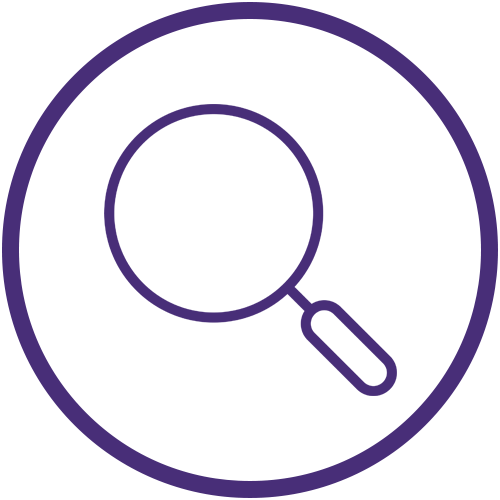
ISEP Course 7: Engaging Faculty in Simulation - May 2024
Welcome to Course 7: Engaging Faculty in Simulation. As you proceed through the course you will be guided step-by-step to view content, participate in discussions, reflect in your journal, and produce a program proposal.
After receiving a passing score on the post-test and assignments you will receive access to Course 8: Beyond the Mannequin.
Key:
Course 7 Disclosure
Course 7 disclosure
Course 7 disclosure
Please read the disclosure statement before starting course 7
ISEP Simulation Education Program Course 7 Acknowledgement Files
Open to download resource.
Open to download resource.
This document includes speaker information, disclosures and learning outcomes to course 7.
Course 7 Pre-Test
5 Questions | 1 attempt | 0/10 points to pass
5 Questions | 1 attempt | 0/10 points to pass
Each course begins with a pre-test and ends with a post-test. You are not graded on the pretest questions.
Course 7 - Module 1: Simulation Studied
Begin self-paced component package.
Begin self-paced component package.
Course 7 - Discussion 1: Barriers and Enablers
Make 1 discussion post to continue.
Make 1 discussion post to continue.
You have reviewed strategies and recommendations for using simulation in healthcare education. You have also stepped through a set of barriers to, and enablers for, faculty engagement in simulation education programming.
Part 1:
Reflect upon two barriers and two enablers that are evident in your program. Write a summary of these two reflections in the journal you have initiated for this course. You can also discuss items that were not included in this course. Provide your peers with the following:
Describe the barriers and enablers to faculty engagement as they occur in your program.
How do you perceive the impacts of each?
With regards to barriers:
What enablers, either listed in this course or identified by you, would alleviate the impacts of each barrier?
How can you implement them?
Part 2:
Read through the posts of your peers. Provide feedback/support for at least two by addressing the following:
How do you relate to the barriers and enablers they have listed and described?
Provide some suggestions and alternatives that can assist them in determining the most pressing barriers to address and enablers to implement.
Course 7 - Module 2: Learning Preferences
Begin self-paced component package.
Begin self-paced component package.
Course 7 Discussion 2: Learning Preferences
Make 1 discussion post to continue.
Make 1 discussion post to continue.
Think about your own learning preferences and motivators for this discussion.
Part 1:
For your initial post, answers the following questions:
What professional development regarding simulation facilitation is available to you?
What opportunities are missing?
What motivates you to participate in professional development activities?
Think about your colleagues, what would motivate them?
Part 2:
Read over the posts on the discussion board from your peers. Compare their needs and the opportunities they cite with your own.
Respond to at least two of your peers by suggesting ways you both could change the professional development landscape.
Course 7 - Module 3: Facilitation
Begin self-paced component package.
Begin self-paced component package.
Course 7 - Discussion 3: Managing Your Team
Make 1 discussion post to continue.
Make 1 discussion post to continue.
You have just considered facilitation and facilitators. You also worked through a brief journal entry regarding integrity and challenging behavior. Work with your peers to arrive at the best way to include the issues and solutions in your Change Management Plan. This kind of commitment to foresight, or being prepared to address the issues should they come up, helps to solidify your presence as a change agent.
Part 1:
Write a post that answers the following questions:
How would you recruit and train facilitators?
List any concerns that you have about challenging behavior on the part of facilitators and learners.
What kind of policies and training should you have in place?
How will you include pillars for professional integrity?
What kinds of policies and training should you put into place?
Part 2:
Read your peers' posts. Take a little time to offer guidance and resources from your own perspective, history, and program.
Course 7 - Module 4: Engaging Faculty
Begin self-paced component package.
Begin self-paced component package.
Faculty Engagement Assignment
Graded as Complete/Incomplete | Due Date: 10/31/2024 at 7:59 PM (EDT)
Graded as Complete/Incomplete | Due Date: 10/31/2024 at 7:59 PM (EDT)
Standard Journal Instructions: To complete each course, you are required to provide a reflective journal entry. Each entry should contain a minimum of 500 words. The document submitted should be a cumulative document with headings and dates of the course journals you are submitting.
Reflection should consider this process:
• Description (keep this fairly short)
• Interpretation or analysis (this should be the main body of your work)
• Outcome or application (ensure you draw clear application to your future practice).
There are journal prompts for most course journals. These are intended to focus you on the materials that were covered in that module. Please note that some journals will have a Part I and a Part II because of the varied materials that are presented in that course. By the end of the ISEP program, your reflective journal will demonstrate your individual learning and progress as a simulation educator/practitioner.
Course 7 Post-Test
5 Questions | 1 attempt | 0/10 points to pass | Graded as Pass/Fail
5 Questions | 1 attempt | 0/10 points to pass | Graded as Pass/Fail
This is the Course 7 assessment. All participants must achieve an 80% or better to complete this course and completed the journal assignment to receive the course certificate and advance to the next course.



